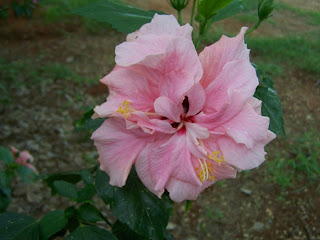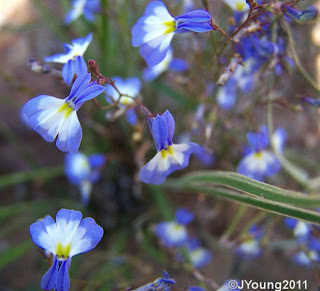TheHibiscus flower is traditionally worn by Hawaiian women. A single flower is tucked behind the ear. Which ear is used indicates the wearer's availability for marriage.

Many species are grown for their showy flowers or used as landscape shrubs. Hibiscus is also a primary ingredient in many herbal teas.

In Mexico, the drink is known as Jamaican water or agua de Jamaica and is quite popular for its color, tanginess and mild flavor; once sugar is added, it tastes somewhat like cranberry juice. Dieters or persons with kidney problems often take it without adding sugar for its beneficial properties and as a natural diuretic. It is made by boiling the dehydrated flowers in water; once it is boiled, it is allowed to cool and drunk with ice.

In Egypt and Sudan, roselle petals are used to make a tea named after the plant, karkade.
Hibiscus species are used as food plants by the larvae of some Lepidoptera species including Chionodes hibiscella, Hypercompe hambletoni, the Nutmeg moth, and the Turnip Moth.

The Hibiscus is used as an offering to Goddess Kali and Lord Ganesha in Hindu worship. The Gumamela or Hibiscus rosa sinensis linn flower has antifungal, emmenagogue, emollient and refrigerant effect.

The bark of the hibiscus contains strong fibers. They can be obtained by letting the stripped bark sit in the sea in order to let the organic material rot away. In Polynesia these fibers (fau, pūrau) are used for making grass skirts. They have also been known to be used to make wigs.

Hibiscus, especially white hibiscus, is considered to have medicinal properties in the Indian traditional system of medicine, Ayurveda. Roots make various concoctions believed to cure various ailments.

The natives of southern India uses the Red hibiscus (Hibiscus rosa-sinensis) for hair care purposes. The red flower and leaves, extracts of which can be applied on hair to tackle hair-fall and dandruff on the scalp. It is used to make hair protective oils. A simple application involves soaking the leaves and flowers in water and using a wet grinder to make a thick paste, and used as a natural shampoo.

Dried hibiscus is edible, and is often a delicacy in Mexico.

One species of Hibiscus, known as Kenaf (Hibiscus cannabinus), is extensively used in paper making. Another, roselle (Hibiscus sabdariffa) is used as a vegetable and to make herbal teas and jams (especially in the Caribbean).







































 The bark of the hibiscus contains strong fibers. They can be obtained by letting the stripped bark sit in the sea in order to let the organic material rot away. In Polynesia these fibers (fau, pūrau) are used for making grass skirts. They have also been known to be used to make wigs.
The bark of the hibiscus contains strong fibers. They can be obtained by letting the stripped bark sit in the sea in order to let the organic material rot away. In Polynesia these fibers (fau, pūrau) are used for making grass skirts. They have also been known to be used to make wigs.


